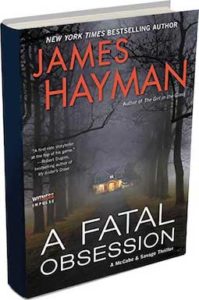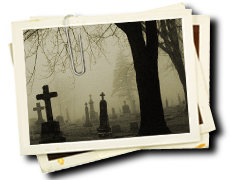The Chill of Night: Inspired by a Simple “What-if?”
Thursday, August 12th, 2010The initial inspiration for the story in my new Mike McCabe suspense thriller, The Chill of Night, grew, as it does in so many books, out of a simple “what-if.” Actually, for The Chill there were two “what-ifs.”
“What if,” I asked myself in the first instance, “what if someone had witnessed a horrendous murder but when they tried to tell the police what they had seen, the cops didn’t believe them?”
Following the logic train that led out of that question resulted in the development of one of the key elements of the plot as well as to one of my favorite characters, a young schizophrenic woman named Abby Quinn.
When the story opens Abby is twenty-five years old.
As the book progresses we learn she grew up on Harts Island, Maine, a small fictional island in Casco Bay, about a mile off the coast of Portland. She led a fairly normal childhood. Her father, Earl Quinn, was a lobsterman on the island and, as a teenager, Abby sometimes worked on his boat. He died in 2002. Abby’s mother, Grace, was an alcoholic who had a series of odd jobs but could never keep anything permanent. Her mother’s brother, Willis, lived with the family for a time. “Crazy Willis,” people called him because he heard voices and suffered from frequent hallucinations. He saw little black bats attacking him from the air and was forever trying to swat them away. Willis hung himself inside Grace’s closet when Abby was eight and Abby discovered the body.
After elementary school on the island, Abby took the ferry across to Portland to attend middle school and high school there. She was a good student and played on the Portland High School varsity field hockey and lacrosse teams. When she was eighteen she enrolled in the University of Southern Maine to study Accounting.
Unfortunately, that’s when she started hallucinating and hearing oices that weren’t there. The Voices twice convinced Abby to attempt suicide by jumping off the rocks on the island into the ocean. She was committed to a psychiatric hospital near Portland where her psychiatrist, Dr. Richard Wolfe, diagnosed her as a schizophrenic.
Under Wolfe’s care she slowly begins putting her life back together. She takes anti-psyhotic medication which keep the hallucinations and voices quiet and which allow her to begin living a fairly normal life. But then one freezing night in January, she sees a monster she thinks of as Death stab another young woman to death.
When she reports the murder, the cops on the island assume Abby is “off her meds” and hallucinating again. But when McCabe finds the victim’s frozen corpse, he realizes Abby really did see what she said she saw and that he must find her before the killer does.
Early readers of The Chill of Night, including several psychiatrists, have told me the book does “an amazing job,” of getting into the head of a young female schizophrenic and telling much of the story from her point of view.
For that I credit two extraordinary memoirs written by female schizophrenics which I read as part of my research process. The first is called The Quiet Room: A Journey Out of the Torment of Madness by Lori Schiller and Amanda Bennett. The second is The Center Cannot Hold: My Journey Through Madness by Elyn Saks. I strongly recommend both to anyone interested in learning about this terrible disease.
I wrote at the beginning of this piece that there were two “what-ifs” that inspired The Chill of Night. That’s true. Unfortunately, I can’t tell you anything about the second one because, if I did, it would give too much away and ruin the story.

